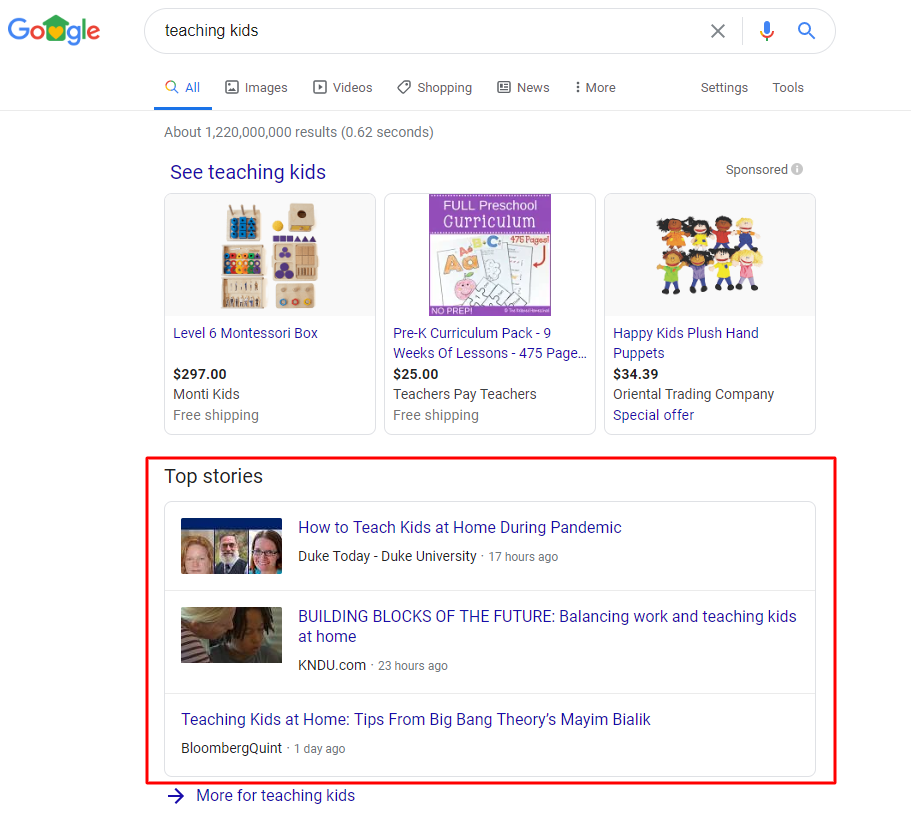If 2020 has taught us anything, it’s that life comes at you fast… and things can change quickly.
This holds true in search, too.
Search engines are constantly updating their algorithms and shifting the ways they return and display search results.
To be successful in search, you must be able to adapt as:
- Competitors change, emerge, shift strategies.
- Search intent and behavior changes (see: COVID-19).
- New search ranking signals are introduced, and old signals are deemphasized.
- Various tactics become outdated or even punished by search engines.
Because links continue to be an integral part of ranking in the search results, I want to show you how to build flexibility into your link campaigns.
This is to ensure you’re working efficiently and maximizing your returns, as well as future-proofing your backlinks and website.
To achieve this flexibility, you need to consider three aspects:
- How you report and monitor progress.
- How the search queries you’re targeting are changing and evolving over time.
- How you are diversifying the tactics and strategies you implement.
Let’s get started.
1. Frequently Report Your Progress
The first step to building an adaptable link campaign is ensuring you have a firm understanding of the progress you’re making (or not making) each day, week, and month – this means frequent monitoring and reporting.
Whether you’re in-house or an agency, you have somebody you report to.
Making these reports a priority from the start will build good habits that will serve your campaign in the event you need to pivot strategies.
Monthly reports are a common cadence since you can compare traffic numbers month-over-month to track growth, but that is not the only metric you should examine in these reports.
You can go deeper to analyze the specific pages you’re pointing links at to spot potential issues before they become larger problems or lead to inefficient work.
Some of these issues include:
- Keyword rankings: While organic traffic growth is often the primary goal of a link campaign, if you’re not seeing any movement on your target keywords, it’s likely time to rethink your strategy.
- Bounce rate: If the bounce rate on your page continues to climb, even though you’re earning quality links, it’s possible your page is not a good result for searchers and it will eventually be devalued by search engines. Consider reevaluating how your page matches searcher intent and either rework the page or target a more relevant page for your links.
- Time on page: If you’re seeing a consistent decline in time on page, then you might be promoting a page that’s trending in the wrong direction and it could be worth finding a new link target.
- % Exit: If more and more people are exiting your site from the page you’re securing links to, you need to reexamine your internal links and consider how you can keep more of the referral and organic traffic your target page is earning on your site.
Along with monitoring these metrics, it’s also important to schedule regular strategy calls or meetings with your client or team.
These meetings are important because goals can shift, even when link acquisition is going great.
Perhaps a new line of business opens, a new competitor enters your space, a health pandemic sweeps the globe.
None of these situations have anything to do with your link building strategy, but they do impact it, and you need to have consistent communication with your client or team to be able to pivot when necessary.
2. Monitor SERP Changes & Trends
Continuously monitoring the search engine results pages (SERPs) that are important to your website is another way to build flexibility into your link campaign.
Now, when I say monitor these SERPs, I mean more than just tracking keyword rankings.
Keyword rankings are important, of course, but there is much more you can learn from the SERPs.
One of the biggest takeaways you can pull from monitoring SERP changes over time is how search engines are interpreting intent for those queries.
For example, the COVID-19 pandemic has shifted search intent for a multitude of queries and even whole industries.
Here is a screenshot of the SERP for [teaching kids]:

While SERP changes happened more rapidly during the pandemic, these changes are constantly occurring as search behavior shifts over time.
Being aware of these trends in the SERPs will inform your link campaign and tell you when it’s time to pivot or shift your focus to a different page.
For example, let’s say you’re building links to help your service page rank for a priority keyword, but you notice the corresponding SERP is beginning to show more and more informational and comparative pages.
Unfortunately, it’s likely your page won’t ever rank there because it doesn’t match the intent the search engine deems appropriate for that keyword.
Knowing this information empowers you to adapt your campaign and focus time and energy somewhere else where you can be more effective.
Keeping a close eye on the SERPs can also help you secure more links.
If you’re promoting an asset for links, you should be paying attention to what types of pages are ranking for related topics.
These are the pages that are succeeding with the audience you’re targeting and you should model your own asset after their best attributes.
For instance, if you see multiple ranking pages have videos, it makes sense that adding a video to your page will make it more linkable.
These SERP insights will help you stay ahead of the curve and shift or bolster your link building strategy, as necessary.
3. Diversify Your Link Building Tactics
Just as diversifying your stock portfolio adds financial flexibility, diversifying your link building tactics adds SEO flexibility – and both are good practices.
The reason you need to diversify your link acquisition strategies is simple: Google could completely negate a given tactic tomorrow.
They decide how their search algorithm operates, and if they view a certain technique as manipulative, they could decide to take action to devalue any links secured via said tactic.
At the same time, anything Google says needs to be interpreted with the right context (spoiler alert: guest blogging still isn’t dead…) as any tactic can be leveraged effectively or spammed to the point you get yourself in trouble.
Also, you never really know which tactics will be most effective in a campaign until you start the work.
Even at my agency, where we’ve built thousands of links for our partners across hundreds of industries, we still can’t always predict how an audience will respond to a given technique, and sometimes we must pivot.
So, you need to employ a diverse strategy that includes many different methods for securing backlinks.
If one tactic isn’t producing results, deprioritize it within your strategy and focus on more lucrative techniques.
Some proven link building techniques include:
- Promoting comprehensive resource guides.
- Earning links through guest posting.
- Finding unlinked brand mentions.
- Securing links through community involvement (sponsorships, charitable donations, scholarships, etc.).
- Professional partnerships or testimonials.
- Getting placements on local or niche directories or resource pages.
- And more.
There are a plethora of ways to build links, and I highly recommend checking out Search Engine Journal’s Link Building Guide for more ideas.
It’s fine to invest in a primary tactic that you’ve seen implemented successfully in the space before.
That said, you should always be trying alternative methods on a smaller scale too so you can easily shift to them if they prove more effective.
Recap
Things move quickly in link building.
If you can’t adapt just as quickly, you won’t be successful.
So, you must build flexibility into your link campaigns from the start.
To do this, you must:
- Regularly report and monitor progress.
- Analyze how the search queries you’re targeting are changing and evolving over time.
- And diversify your link acquisition tactics and strategies.
Link building comes down to time and energy.
But if you build an agile campaign structure, you’ll be able to use that time and energy more efficiently.
More Resources:
- A Link Building Checklist to Earn More & Better Links
- 5 Tips to Run a Sustainable Link Building Campaign
- 12 Examples of How to Earn High-Quality Links the Natural Way
Image Credits
Featured Image: Created by author, May 2020
Screenshot taken by author, May 2020





